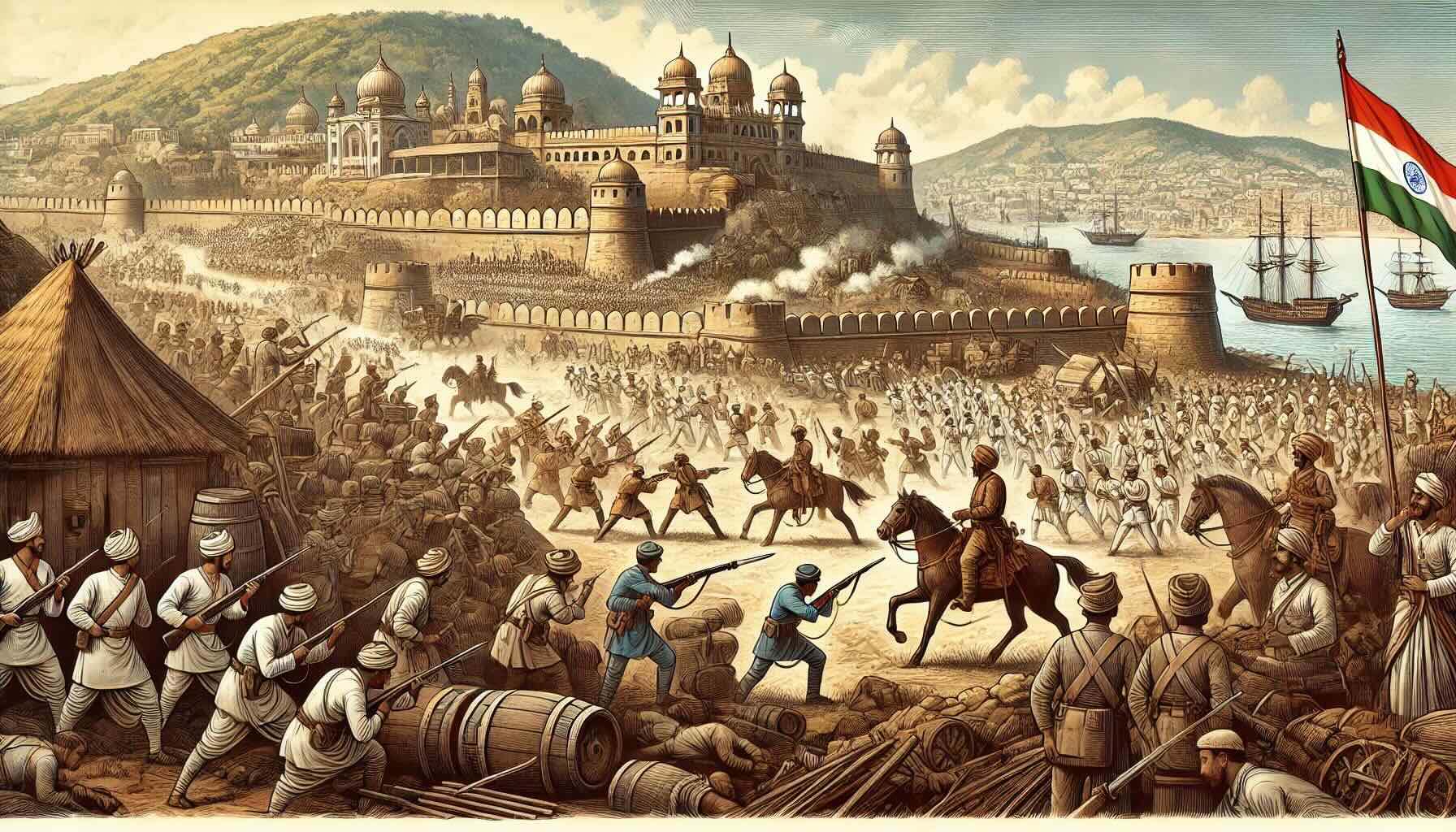
The Dundiya Rebellion was a significant uprising in Indian history, yet many remain unaware of its details. This rebellion, led by Dundiya Wagh, took place in the late 18th century against British colonial rule. Dundiya, a former Maratha soldier, turned into a fierce leader who rallied various local chieftains and warriors to challenge British dominance. His tactics and bravery made him a formidable opponent, earning him the nickname "The Lion of the Deccan." Despite his efforts, the rebellion was eventually crushed by British forces. However, Dundiya's legacy lives on as a symbol of resistance and courage. Here are 25 intriguing facts about the Dundiya Rebellion that highlight its importance and impact.
Key Takeaways:
- The Dundiya Rebellion was a major uprising in India led by Dundiya Wagh against British colonial rule, inspiring future freedom fighters with his guerrilla tactics and becoming a symbol of resistance.
- Dundiya Wagh's legacy lives on through folk songs, cultural celebrations, and historical studies, showcasing the lasting impact of his rebellion and its influence on Indian independence movements.
The Dundiya Rebellion: An Overview
The Dundiya Rebellion was a significant uprising in Indian history. It showcased the spirit of resistance against colonial rule. Here are some fascinating facts about this rebellion.
- The Dundiya Rebellion took place in the early 19th century, primarily in the region of Karnataka, India.
- The rebellion was led by Dundiya Wagh, a former Maratha soldier who turned into a rebel leader.
- Dundiya Wagh was known for his guerrilla warfare tactics, which made him a formidable opponent for the British.
- The rebellion was a response to the British East India Company's oppressive policies and heavy taxation.
- Dundiya Wagh managed to gather a large following, including discontented soldiers and local peasants.
Key Events of the Dundiya Rebellion
Several key events marked the course of the Dundiya Rebellion. These events highlight the intensity and impact of the uprising.
- In 1799, Dundiya Wagh escaped from British captivity and began his rebellion.
- He initially sought refuge with Tipu Sultan, the ruler of Mysore, who provided him with support.
- After Tipu Sultan's death, Dundiya continued his fight against the British independently.
- Dundiya's forces captured several key forts and towns, disrupting British control in the region.
- The British launched multiple military campaigns to capture Dundiya, but he evaded them for several years.
The Downfall of Dundiya Wagh
Despite his initial successes, Dundiya Wagh's rebellion eventually faced challenges that led to his downfall.
- The British intensified their efforts to capture Dundiya, deploying more troops and resources.
- Dundiya's forces suffered from a lack of supplies and internal conflicts.
- In 1800, Dundiya Wagh was finally captured by the British near the town of Conjeeveram.
- He was executed by the British, marking the end of the rebellion.
- Despite his defeat, Dundiya Wagh became a symbol of resistance against colonial rule.
Legacy of the Dundiya Rebellion
The Dundiya Rebellion left a lasting impact on Indian history and inspired future generations.
- The rebellion highlighted the widespread discontent with British rule in India.
- Dundiya Wagh's guerrilla tactics influenced future freedom fighters in their struggle against the British.
- The rebellion is remembered as one of the early uprisings against colonial oppression in India.
- Dundiya Wagh's story has been immortalized in folk songs and local legends.
- The rebellion served as a precursor to larger movements for Indian independence in the 19th and 20th centuries.
Cultural Significance of the Dundiya Rebellion
The Dundiya Rebellion holds cultural significance in the regions where it took place.
- Local communities in Karnataka celebrate Dundiya Wagh as a hero and a symbol of resistance.
- The rebellion is commemorated through various cultural events and festivals.
- Folk tales and songs about Dundiya Wagh are passed down through generations, keeping his memory alive.
- The rebellion has been the subject of several books and historical studies, highlighting its importance.
- Dundiya Wagh's legacy continues to inspire those who fight against oppression and injustice.
The Dundiya Rebellion's Lasting Impact
The Dundiya Rebellion left a significant mark on history. This uprising, driven by the Dundiya people's desire for freedom, showcased their resilience and determination. Their fight against colonial rule wasn't just a battle; it was a statement of their unwavering spirit.
Understanding the rebellion helps us appreciate the complexities of colonial history. It highlights the struggles faced by indigenous communities and their relentless pursuit of justice. The Dundiya Rebellion reminds us that history is filled with stories of courage and resistance.
Learning about such events enriches our knowledge and broadens our perspective. It teaches us the value of standing up for one's rights and the power of collective action. The Dundiya Rebellion, though a chapter in the past, continues to inspire and educate, reminding us of the enduring human spirit.
Frequently Asked Questions
Was this page helpful?
Our commitment to delivering trustworthy and engaging content is at the heart of what we do. Each fact on our site is contributed by real users like you, bringing a wealth of diverse insights and information. To ensure the highest standards of accuracy and reliability, our dedicated editors meticulously review each submission. This process guarantees that the facts we share are not only fascinating but also credible. Trust in our commitment to quality and authenticity as you explore and learn with us.
